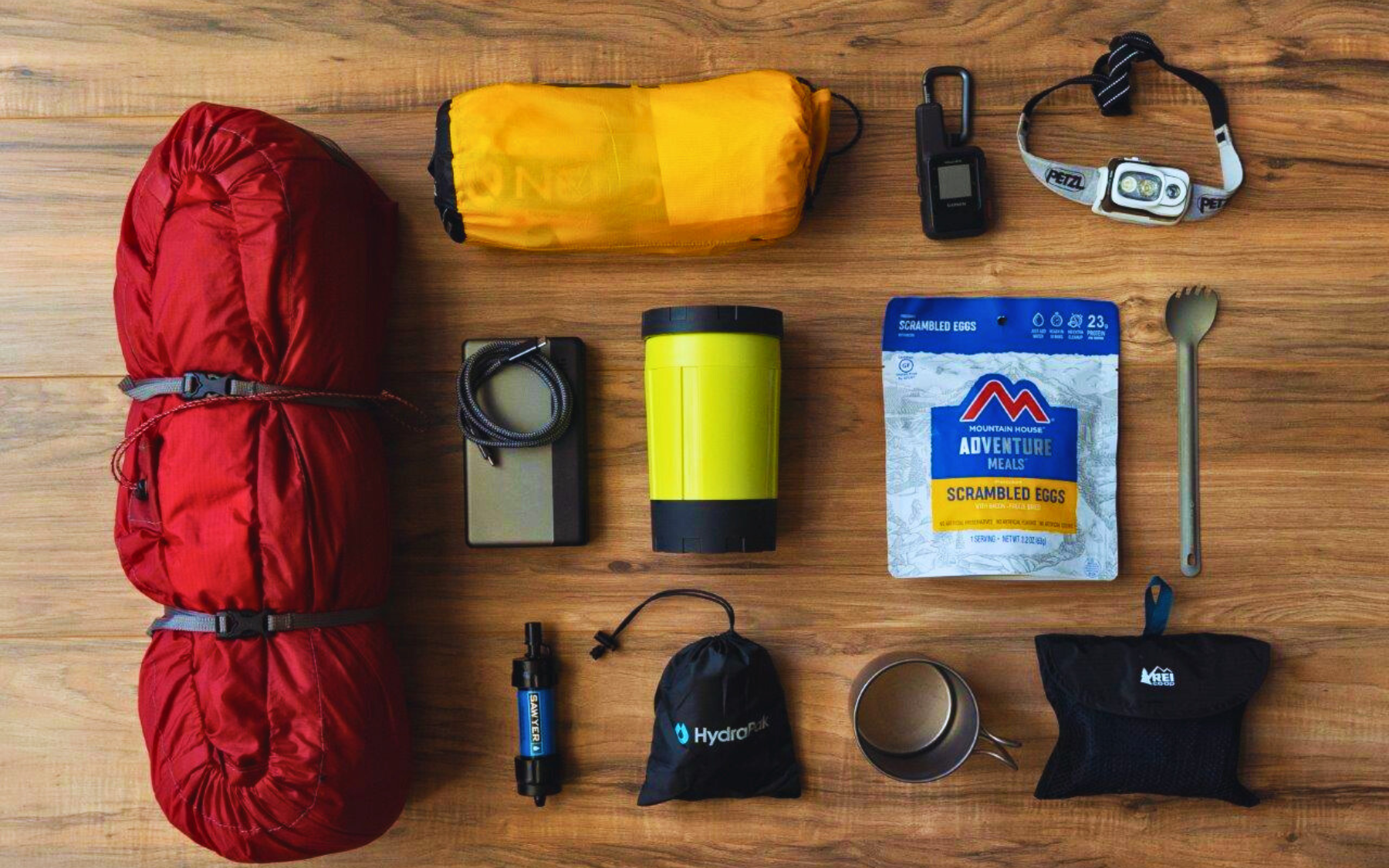In this article, we’ll introduce the science of electric backcountry cooking and compare its benefits relative to traditional gas-stove or campfire cooking methods. Let’s dive in!
The 3 factors influencing electric backcountry cooking
When it comes to electric backcountry cooking, there are 3 pieces of science and technology which inform performance: USB-C technology, battery technology, and the fundamental physics of boiling water. Understanding these 3 factors is important to understanding the performance of EcoSimmer and of electric backcountry cooking solutions.
1. USB-C technology
Most every piece of equipment in a backpacker’s bag has multiple uses. This helps reduce pack weight and size, and generally leads to a happier backpacker. We intentionally chose to leverage USB-C in designing EcoSimmer for these reasons: USB-C is quickly becoming the new universal standard for all devices. USB-C means that a single cable can be used for most newly designed devices (phones, laptops, headlamps, satellite phones, etc).
USB-C technology's power output is increasing roughly every 12-24 months. In 2020, the maximum output was 45-60W; in 2022 it was 60-100W. In 2024, 100-140W USB-C is commercially available, though lower is still more common. For reference, USB-A maxed out around 10-15W. Importantly, this 140W USB-C power output figure is what dictates how fast a boil can be achieved or how fast a meal can be heated. For example, a standard AC wall outlet in US homes may deliver 1,200W (8.5x what a 140W USB-C port can do), and gas flames generally output 3,000W (21x what a 140W USB-C port can do). This means that your electric kettle at home or your gas stove can boil the same amount of water 8.5x or 21x faster than a 140W EcoSimmer—in theory (more on that below)!
2. Battery technology
To make a cooking solution portable (for the backcountry), power generally needs to be delivered from a battery. Portable batteries tend to be sized with a maximum of 27,000mAh (or about 100Wh), which is a size limit set by the FAA to be allowable on airplanes. Therefore, as a general rule, portable batteries are typically 90-100Wh. Note, larger batteries (typically called power stations) exist, but are not compact nor lightweight enough to fit in a backpack. These power stations are great for car camping, overlanding, or at home use.
Tying our USB-C and battery technology knowledge together, we can bring our example to life:
- A typical 100Wh battery capable of outputting 100W (20V, 5A) can provide 100W over the course of 1 hour
- A typical 100Wh battery capable of outputting 140W (28V, 5A) can provide 140W over the course of 42 minutes.
In both cases, 100Wh is the total energy capacity, however the battery capable of delivering 140W of power is 40% faster than one delivering 100W (i.e. a 140W capable battery can boil water or make meals 40% faster than a 100W capable battery).
Now, the question becomes: how do we get the most boils out of our battery? For this, we need to understand the real-world physics of boiling water.
3. The physics of boiling water
According to physics, 42 Wh is needed to boil 16 oz of water (2 cups or 473 mL). However, that assumes 100% efficiency—that all energy goes directly into heating the water. However, in reality, nothing operates at 100% efficiency—not EcoSimmer, not gas stoves, not household electric kettles, and certainly not campfires.
In all cases, efficiency reduces primarily due to ambient heat loss. This means that the power from fuel (gas or electric) ends up being used to heat the surrounding air rather than the cooking surface (e.g. a pot). If we compare the power loss of various cooking technologies however, we see that electric is most efficient:
- Gas backpacking stoves generally achieve 40-50% efficiency
- Electric household kettles generally achieve 80-90% efficiency
- EcoSimmer generally achieves 80-90% efficiency
This efficiency can be influenced by many things (such as elevation, water purity, etc).
Gas stoves are least efficient, namely since flames are very hard to insulate and to direct towards cooking surfaces. A 1,200W household electric kettle is very efficient, as these devices typically have heating elements that get submerged in water (i.e. they are insulated by the water they are heating, so there is very little heat loss). Finally, EcoSimmer is very efficient as well, though it does not have exposed heating elements (as a safety precaution). With EcoSimmer, roughly 50Wh is needed to boil 16 oz of water.
Conclusion
Understanding the science behind electric backcountry cooking is straightforward—it's simply physics at work! With these principles in mind, we can appreciate the practical benefits and applications of EcoSimmer.
Boiling 16 oz of water with EcoSimmer takes about 25 minutes. Achieving a simmer at 80°C takes just 18 minutes (28% faster!), which can be expedited even further by using less water, warmer initial temperatures, or cooking at higher elevations.
Based on our field-tested data, a standard 100Wh battery can boil 32 oz (~1 liter); the same battery can bring 40 oz (~1.25 liter) to a simmer. To put this into perspective, a typical freeze dried or dehydrated backpacking meal requires 10-15 oz (300-450 mL) to rehydrate. This means that a single 100Wh battery can make 2-3 meals through boiling, or 3-4 meals when simmering. To get even more performance from a battery, check out why we recommend cooking with the Simmer Method, or learn how to get the most out of your battery.
Considering these performance metrics, a single 100Wh battery could alternatively support preparing 2 full dehydrated meals at night as well as 2 servings of oatmeal and coffee—an ideal setup for a typical 2-night, 3-day backpacking trip. EcoSimmer’s efficiency and versatility make it a dependable companion for outdoor enthusiasts seeking convenient, energy-efficient cooking solutions in the backcountry.




